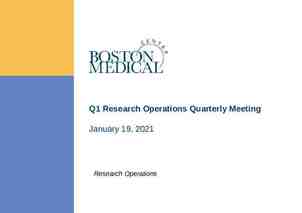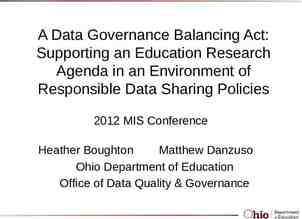Update on WHO and TFH activities Hanna Yang, Technical Officer,
16 Slides1.55 MB
Update on WHO and TFH activities Hanna Yang, Technical Officer, Air Quality WHO European Centre for Environment and Health Geneva, Switzerland September, 2017 1
Presentation outline TFH meeting May 2017 Reporting on activities for 2016-2017 Update relevant regional activities Workplan 2018 - 2019
20th TFH Meeting (16-17 May 2017) : 52 participants from 32 Member States to the Convention National and international policies and processes on air quality and health Review of the progress in research on health impacts of air pollution Communication and public health messages for air pollution Experiences in using WHO AirQ software to quantify the health impacts of air pollution Discussion of current activities, mandate and work plan of TFH for 20182019 *Funding from Switzerland and Germany acknowledged
Workplan/Activities for 2016-2017 1. Develop further the methodologies for assessment and quantification of direct and indirect effects of long-range transboundary air pollution on human health Þ Launched of WHO AirQ tool(2016) Training workshop, including interactive presentation of case studies : 20 May 2016 Example of ongoing work for Serbia presented Potential for use at global level highlighted Interest raised by several TFH participants for use of AirQ for national health risk assessment Enhanced capacity-building planned by WHO Experts meeting : 13-14 Feb 2017 Discussion on further development of AirQ Supporting capacity building (Serbia, Hungary)
Survey results of the AirQ users
2. Collect and analyse the evidence on health impacts of ozone and particulate matter (including black carbon) Þ Update of WHO Global Air Quality Guidelines (ongoing) 1st Guideline development group meeting : Sep 2016 Guideline proposal approved by Guideline Review Committee: Jan 2017 Systematic reviews on long-term exposure to (PM, NO2 and O3) and short-term exposure to PM, NO2, O3, SO2, CO : May 2017 2nd guideline development group meeting : 14 16 March 2018 * Funding/in-kind support received from the European Commission (DG-Env), Switzeland, USA, Germany and Republic of Korea
3. Assess the practices for communication of health risks associated with air pollution exposure Overview on communication strategies/systems in different parties to the Convention – results of WHO survey Survey : 2014 2015 Final draft report presented in 19 TFH meeting(May 2016)
Publications Publication now available on the web at://www.euro.who.i nt/en/healthtopics/environmentand-health/airquality/publications (2016) (2017)
Update on Relevant Regional Activites 9
The Ostrava outcome documents Improving indoor and outdoor air quality for all Ensuring universal, equitable and sustainable access to safe drinking-water, sanitation and hygiene for all and in all settings Minimizing the adverse effects of chemicals on human health and the environment Preventing the adverse environmental and health effects, costs and inequalities related to waste management and contaminated sites Strengthening adaptive capacity and resilience to climate change-related health risks and supporting mitigation measures Supporting the efforts of European cities and regions to become healthier, more inclusive, safer, resilient, and sustainable Building the environmental sustainability of health systems Enhancing action at the national level – developing national portfolios for action http://www.euro.who.int/en/media-centre/events/events/2017/06/sixth-ministerial-conference-on-environment-and-health/read-more
Compendium of possible actions to improve AQ Develop comprehensive national and local strategies and actions that reduce air pollution, peoples’ exposure to it and its health impacts; Encourage the implementation of the UNECE Convention on Long-range Transboundary Air Pollution and promote ratification and implementation of its relevant protocols; Develop and strengthen cross-sectoral and multistakeholder cooperation on air quality improvement at national and regional levels, including on sharing of monitoring data. Ensure that public health and environment authorities take a leading role in raising public awareness of issues related to air quality and health (Box 3); Improve air quality monitoring using harmonized data collection for health impact assessment at national and local levels’; Develop and/or strengthen a national emission inventory and monitoring system to collect data on air pollutants emitted by various sources; Provide training opportunities and facilitate research on air quality and health, and develop tools to encourage actions to address air pollution through evidence-based policy-making; Reduce indoor air pollution caused by, inter alia, cooking, heating, tobacco smoke, inadequate ventilation, mould and chemicals in indoor air; When taking national and local actions on improving indoor and ambient air quality, pay special attention to vulnerable populations including children, youth, women and the chronically ill;. Take into account the WHO air quality guidelines and indoor air quality guidelines in the policymaking process 11
WorkPlan 2018 - 2019 12
Proposed updated mandate for TFH General/ Long term Recommendation from policy review group Specific/ Short term Proposed Workplan 20182019 Specific recommendation to TFH to further review and harmonize methodologies for health impact assessments (short term); to further assess the health effects of particulate matter(short term and long term); to further work on dose/concentration response functions (short term); Airborne effects of HM and POPs be more thoroughly prioritized wrt policy needs (long term) Discussion of TFH
WorkPlan 2018-2019 Consolidate existing evidence on health outcomes of exposure to air pollution Þ Update of the evidence on the health impact of O3, PM, NO2, SO2 and CO (Achieved in the update of the global WHO Air Quality Guidelines) A (scoping) emerging issues and methods for health risk/impact assessment of air pollution and cost benefit analysis(pending availability of resources) Further develop methodologies for assessment and quantification of direct and indirect effects of long-range transboundary air pollution on human health Update AirQ tool for quantification of the health effects of air pollution 14
WorkPlan 2018-2019 Capacity building for health impacts assessment at regional and sub-regional levels Þ Development and implementation of the capacity building curriculum, by using AirQ tool Review the methods used for estimating burden of disease attributable to air pollution Þ Regional input to the global project coordinated by WHO HQ Review communication strategies for health messages related to air pollution, including on short term episodes and for susceptible groups Regional input to the global project coordinated by WHO HQ Next TFH meeting will be held on 16 - 17 May 2018 15
Thank you for your attention http://www.euro.who.int/en/health-topics/environment-and-health





















